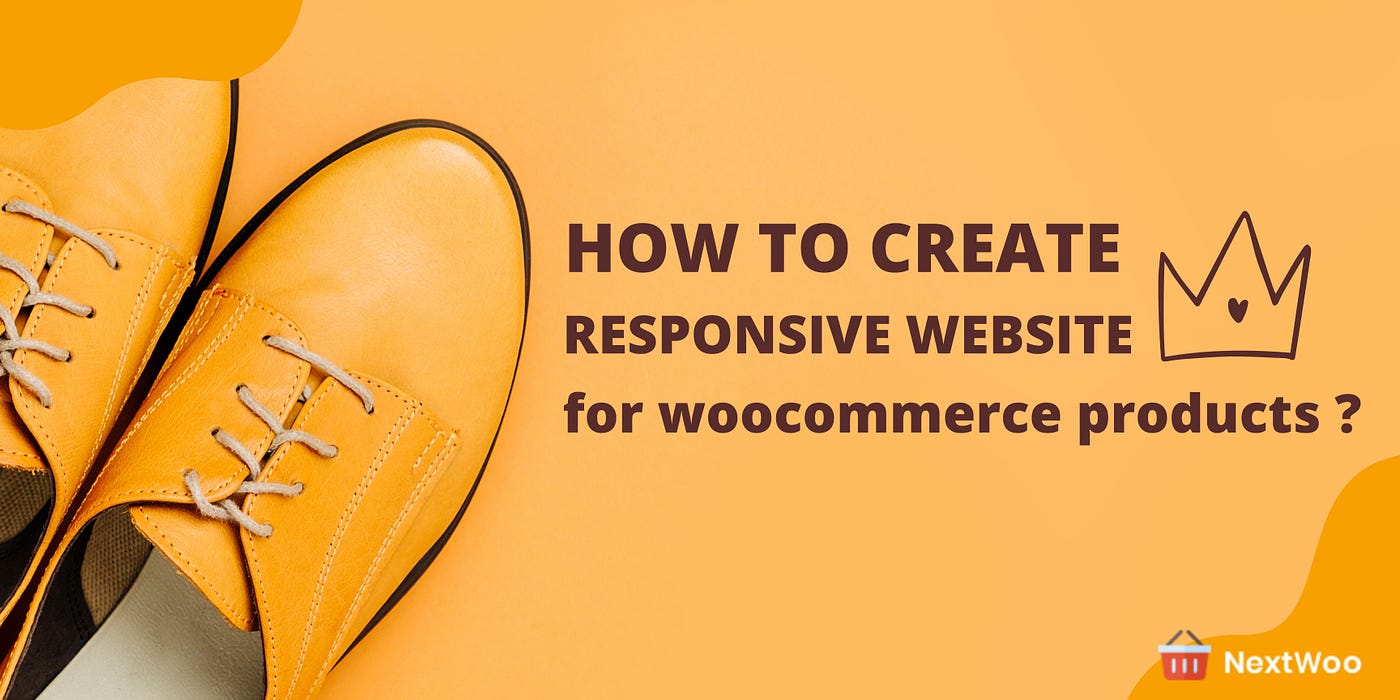how to create responsive website for woocommerce products ?
Various website owners utilize the famous WooCommerce WordPress eCommerce plugin to offer a variety of services. It has many functions.

If you need Woocommerce installed on your website for eCommerce or any related features like booking, subscription licensing code, and more, you’ve come to the right place.
5 Ways to Improve the Responsiveness of Your Product Pages
1. Define the Viewport
A viewport basically tells the web browser to scale the page to properly fit the screen that it’s being viewed on. It’s the section of the page that the viewer sees. So for example, when viewing a page on a mobile device, whatever is in view is considered the viewport. When the page is zoomed in to the top right of the page, for example, then the viewport has been adjusted to a specific width. Seeing the total width of the page when zoomed out to fit everything on the display means the viewport has been configured to show the entire width of the page.
By adjusting the values in the viewport tag, you can adjust how mobile devices show your website.
2. Choose a Responsive Design
With internet traffic from mobile devices growing exponentially over the past several years, it only makes sense to have a responsive design that is capable of showing your product pages perfectly on all display screens.
You could focus on specific devices and resolutions, but that’s an unreasonable approach. It would take you all week to list all the phones, resolutions, and platforms available out there. You’d have to come up with a totally new design by the time you’ve gotten through coding for each particular device.
If you check your Google Analytics, you’ll more than likely notice a huge shift in what type of platform your viewers are visiting from in favor of mobile devices.
The optimal — and only — solution is to focus on a responsive design for your site. This basically means developing a single web property that can alter its display based on what device it’s being viewed on. Having a site that shows well on all sorts of devices is definitely a time saver. More and more web developers are catching wind of this, and are building their sites based on responsive design principles.
3. Only Show Navigation That is Crucial
Viewers may have plenty of room to view a website from a desktop screen, but when you’re browsing a site from a smartphone, space is extremely limited. Rather than loading your screen full of links showing all the categories available, consider displaying only the navigation elements that are critical for that particular moment.
Of course, you still want to make sure your visitors have just as positive a shopping experience when using a mobile device as they would on a desktop computer. As such, each section of the website should be easy to get to, but that doesn’t automatically translate into showing everything all at once. Instead, design your website so that the viewer can focus on the important aspect of the page — such as the product you’re selling — after which they can use the navigation as required.
4. Use a Slimmed Down Header
The header is crucial for any website. It’s where you advertise your brand, include important promotions, and provide for navigation links. The header can also include the product categories for your e-commerce site. It shows up on every page, and should ideally remain consistent throughout.
You have the luxury of incorporating a big, navigation-loaded header when viewing the site from a desktop. However, the header really needs to be streamlined quite a bit for viewers visiting your site from a mobile device. Ideally, the header should be slimmed down by as much as 15 percent of the full screen view.
5. Use Touch-Friendly Navigation
People aren’t clicking a mouse to access various links on your site when they’re visiting from a smartphone. While using a mouse will allow for much more precise clicking from a PC, a fingertip requires a little more slack. Minuscule clicks or hovering over icons may be fine for viewing websites on a desktop, but this is nearly impossible with a mobile device where your fingertip is the cursor.
The Best Responsive Design for WooCommerce Plugin with Extraordinary Features that I can suggest for you is NextWoo
NextWoo is a WooCommerce Builder to build a Single Product, Cart, Checkout, My Account, Shop Loop, related products, Quick view, Up-sell, Cross sale, and so on by Elementor or Gutenberg.
Elementor is a popular WordPress page builder plugin. It lets you easily create custom layouts for your WordPress pages with a drag & drop interface.
Due to Elementor’s popularity, there are many WordPress themes made specifically with support for Elementor and Elementor Pro. However, it can be hard to know which will be the best WordPress theme for your needs.
Hope you this was helpful, for more visit our website


Comments
Post a Comment